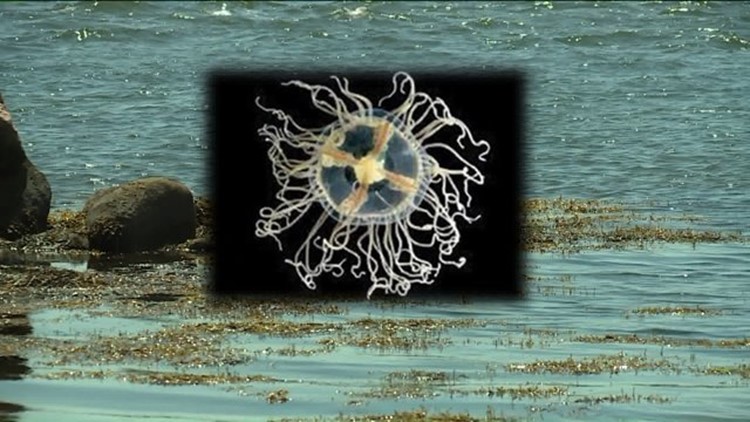GROTON--There are plenty of jellyfish on display at the Mystic Aquarium, and while they stay behind the glass you’re safe from danger. But in Groton, a painful prick may end up sending you to the hospital.
The so-called "clinging jellyfish" packs a potent sting, but hasn't been a big concern in New England for years.
The specific jellyfish that hasn't been seen in Connecticut in years has recently been causing problems for beachgoers in Groton, as well as Nantucket, Massachusetts, and even as far south as New Jersey, where The New York Times reports it was spotted for the first time in the Shrewsbury River.
The so-called "clinging jellyfish" hangs out in eelgrass and other vegetation, so it's not often seen on the sand. But if you do come across it, expect some real pain, unlike any other jellyfish sting you've ever experienced.
"You'll immediately notice, you know, some pretty severe pain. You'll develop a rash, you can get some pretty severe dermatitis, you'll have joint pains," explained Cris Sodergren, the jellyfish expert at the Mystic Aquarium.
A man swimming in Mumford Cove in Groton was recently taken to the ER after he was stung.
According to researchers with the California Department of Fish and Wildlife, while the clinging jellyfish wasn't native originally on the East Coast--it comes from the Asian Pacific coastline--it was first spotted in Massachusetts in 1894, and not long after in Noank, Connecticut. After that it popped up sporadically over the years, at times dying off along with the eelgrass, but later returning.
However, Sodergren said that the most recent clinging jellyfish spottings have proven that the latest batch of the species is more toxic than ever before. Sodergren says it's a mystery why the sting has become more potent.
While you don't need to be too concerned if you're a casual beachgoer, you should be on alert if you're near eelgrass, and if you you plan on digging or clamming. You also need to beware if you plan on swimming during the nighttime, when the jellyfish seem to un-cling and head out into the water.
The question still left unanswered: will the clinging jellyfish spread to other beaches on the Connecticut shoreline?
Sodergren said scientists are on the hunt for the jellies to research them and learn more, such as why they’re back and if and when they may disappear again.



